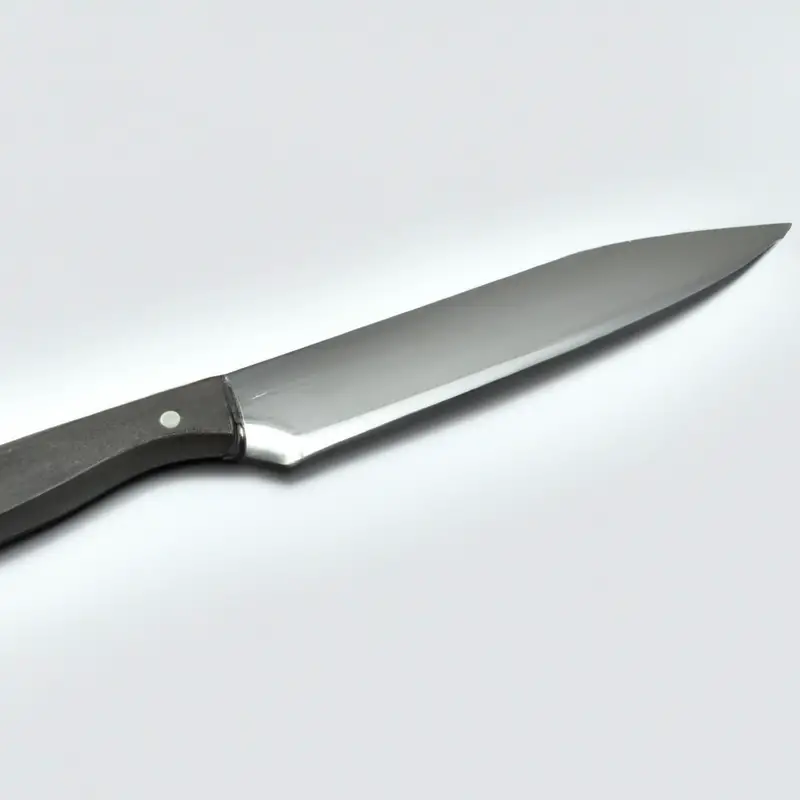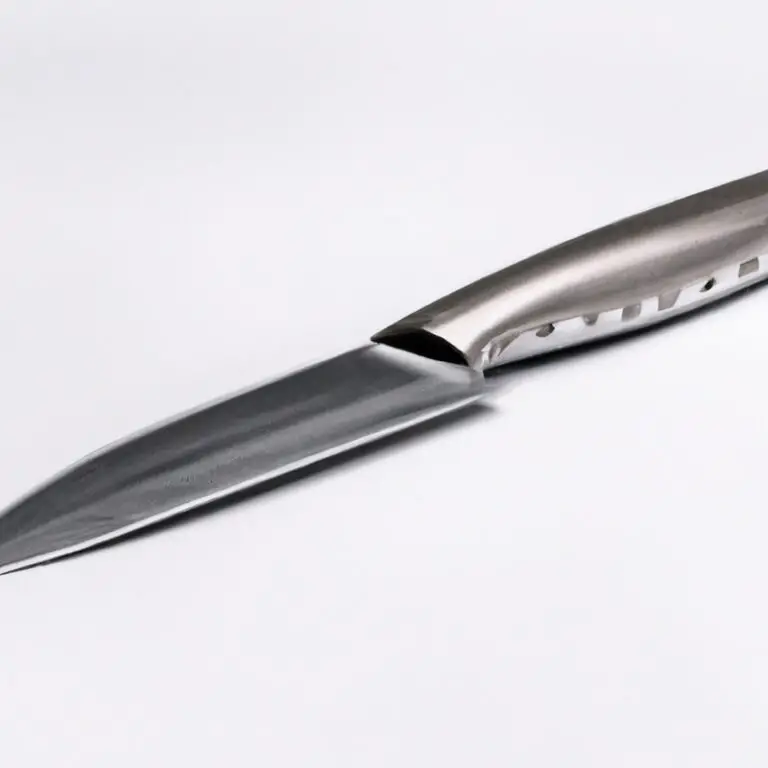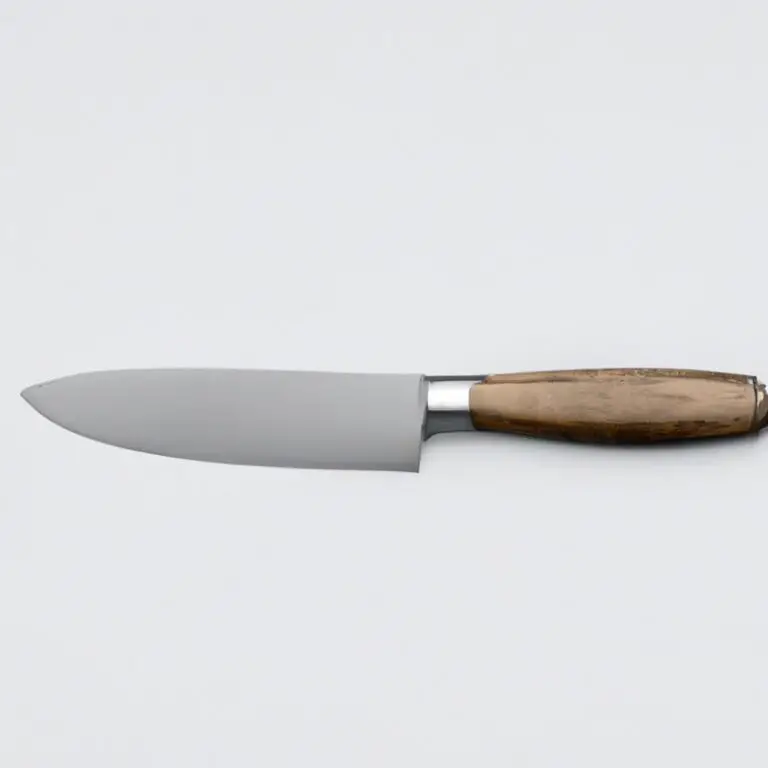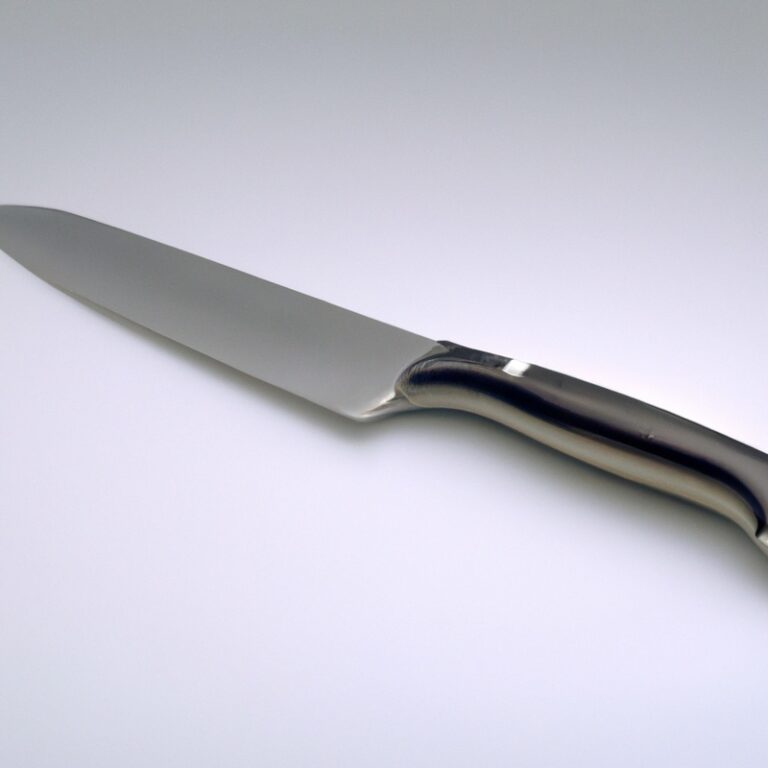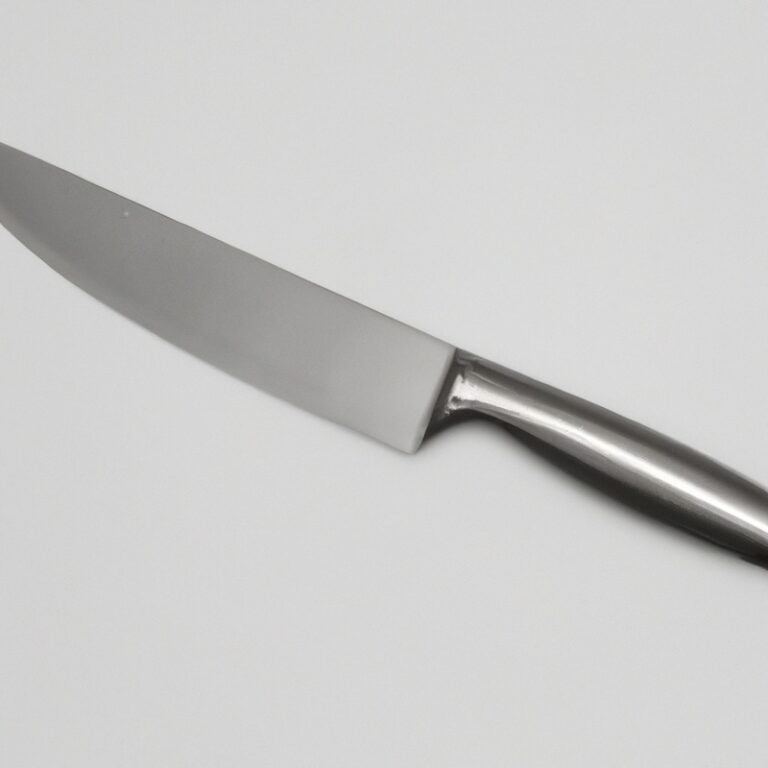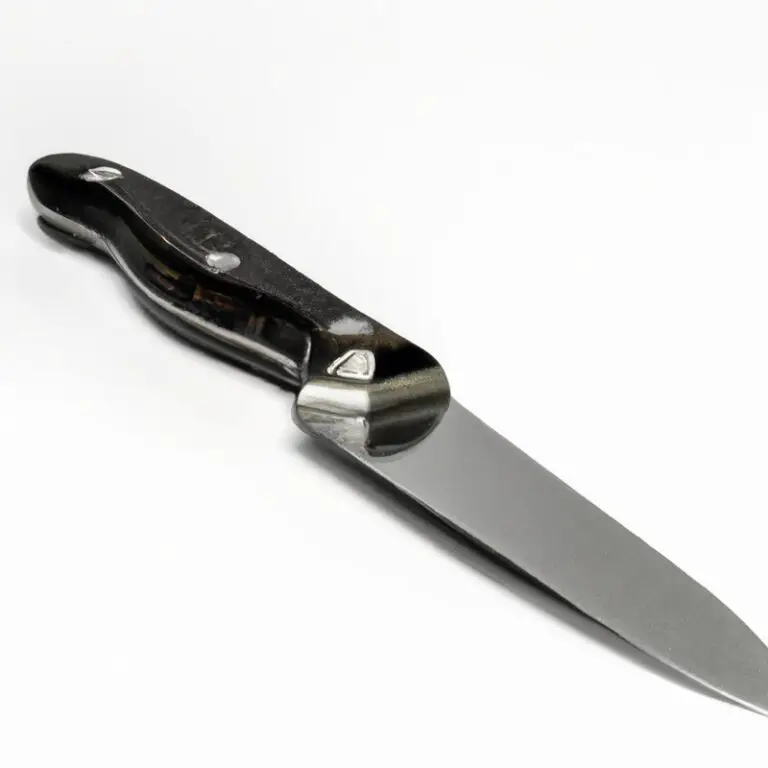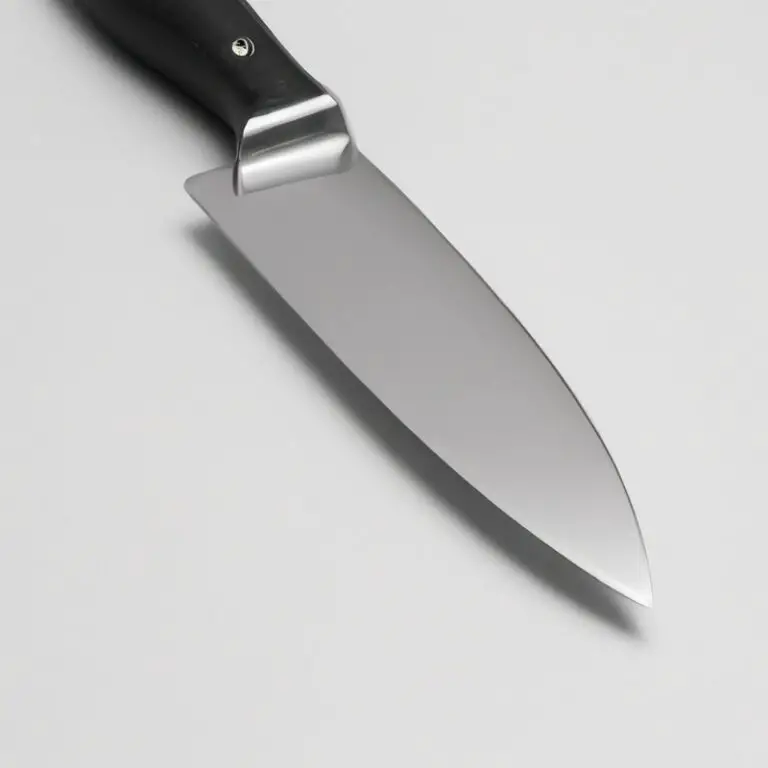Can I Use a Paring Knife To Slice Bread Or Cake? – Tips
Key Takeaways:
- A paring knife may not be the best tool for slicing bread or cake because of its small size and pointed tip.
- Slicing with a paring knife can be dangerous and may result in uneven slices or injury.
- It is recommended to use a serrated knife or a bread knife for slicing bread and a chef’s knife or a utility knife for slicing cake.
- Selecting the right knife for the job can make the slicing process easier, safer and help you achieve perfect, even slices.
Have you ever found yourself in the kitchen with the wrong knife for the job? It’s a common mistake, but when it comes to slicing bread and cake, using the wrong knife can be a recipe for disaster.
In this article, I’ll explore whether a paring knife is suitable for slicing bread and cake, or if you need a separate bread knife.
We’ll also discuss the risks of using a paring knife for these tasks and explore some alternatives. Proper knife maintenance and handling are essential for kitchen safety, so let’s dive in and find out what type of knife you should be using for your next baking project.
| Knife Type | Suitable for Slicing Bread/Cake? |
|---|---|
| Paring Knife | No, not recommended |
| Bread Knife | Yes, recommended |
| Chef’s Knife | Yes, but not ideal |
Understanding the Purpose of a Paring Knife
The paring knife is a small, versatile knife used for intricate tasks in the kitchen. Its primary purpose is to peel, trim, and shape fruits and vegetables.
Paring knives have a pointed blade that enables them to perform precision cuts effortlessly.
While some may attempt to use a paring knife to slice bread or cake, it’s important to understand that paring knives aren’t suitable for these tasks. Attempting to use a paring knife for slicing bread can result in uneven cuts, which can lead to an unpleasant presentation.
The thin blade of a paring knife can bend under undue pressure, causing it to snap or break.
Similarly, using a paring knife to slice a cake can result in an uneven cut that ruins the overall presentation of the cake. It’s best to use a serrated bread knife for slicing bread, while a chef’s knife or serrated knife is more appropriate for slicing cakes.
Understanding the purpose of a paring knife and its limitations can help prevent kitchen accidents and ensure that your kitchen tasks are accomplished efficiently.
Differentiating Between a Paring Knife and Bread Knife
Paring knives and bread knives are two different types of knives used in the kitchen. Paring knives are small knives used for precise cutting, peeling, and trimming, while bread knives are long, serrated knives used specifically for slicing bread.
Paring knives are not suitable for slicing bread due to their short blade length and lack of serration, which can make the task challenging and risky.
Bread knives, on the other hand, have a longer blade and serrated edge, making them more efficient and safer for slicing bread. It is essential to use the right tool for the job to ensure a successful outcome and prevent any kitchen accidents.
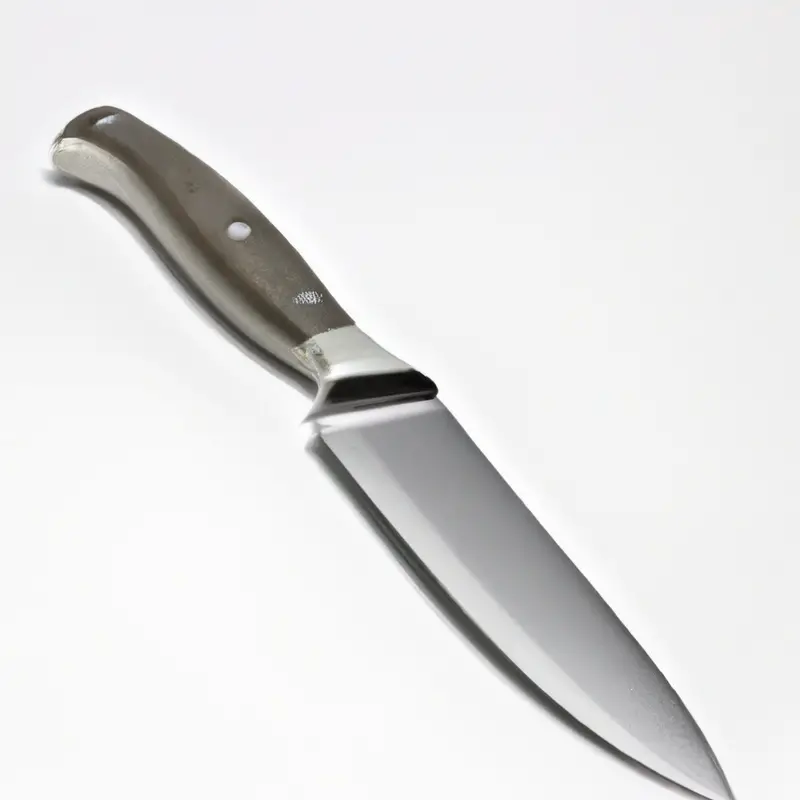
Limitations of Using a Paring Knife for Slicing Bread
Using a paring knife for slicing bread has several limitations. Paring knives have short and thin blades designed for intricate cutting tasks such as peeling fruits and vegetables.
Therefore, they are not ideal for cutting through thick and crusty bread.
Paring knives can potentially squash and damage soft bread, making it difficult to achieve uniform slices. Moreover, the blade’s shorter length makes it challenging to cut through a whole loaf without tearing the bread, which can ruin its texture and appearance.
Overall, while using a paring knife for slicing bread may seem like a convenient option, it is not the best tool for the job.
Risks of Using a Paring Knife for Slicing Cake
Using a paring knife for slicing cake can result in injury and damage to the knife. Paring knives are designed for precision tasks like peeling and shaping fruits and vegetables, not for cutting through dense and soft bakery products like cakes.
The small blade of a paring knife can cause uneven cuts, resulting in an unappetizing cake appearance.
It might also make the cake crumble, increasing the risk of mess while serving. Additionally, applying force on a small blade could cause it to break off, damaging the knife and risking injury to the user as well.
To avoid these risks, it’s preferable to use a serrated knife or a larger cake knife for slicing cake.
Alternatives to Using a Paring Knife for Slicing Bread and Cake
If you don’t have a bread knife to slice bread or cake, there are a few alternative tools you can use. A serrated knife is a great option that will easily cut through the crust of bread and the delicate layers of cake without crushing it.
A chef’s knife is also a good alternative that can handle most kitchen tasks, including slicing bread and cake.
Make sure it is sharp and has a long enough blade to cut through your baked goods. However, avoid using a straight paring knife, as it’s not designed to handle the rigors of slicing bread or cake.
Using a proper knife for the task will ensure a better result and make your cutting experience safer and more efficient.
Proper Maintenance of a Paring Knife for Optimal Performance
Proper maintenance of a paring knife is crucial for optimal performance. Here are some maintenance tips:
- Always hand wash your knife with warm soapy water and dry it immediately.
- Use a sharpening stone or honing steel to maintain the sharpness of the blade.
- Store your knife in a knife block or a sheath to prevent damage to the blade.
- Avoid using abrasive materials such as scouring pads or steel wool on the blade.
- Regularly lubricate the joint between the blade and handle with food-grade mineral oil to prevent corrosion.
Following these simple steps can increase the longevity of your paring knife and ensure it consistently performs at its best.
Choosing the Right Knife for Each Task
Choosing the right knife for each task is essential to ensure optimal performance and safety in the kitchen. Different knives are designed to handle specific tasks, and using the wrong one can result in injury, damage to the knife, or poor results.
When selecting a knife, consider the blade type, size, and materials.
A chef’s knife is perfect for cutting meats and vegetables, while a serrated bread knife is ideal for slicing bread and cakes. A smaller paring knife is best for precision tasks such as peeling and trimming.
Investing in high-quality knives will ensure that they last a long time and perform well.
Proper maintenance, such as sharpening and honing, is also crucial to obtain the best results and avoid accidents. By choosing the right knife for each task, you can enhance your cooking experience and achieve optimal results in your dishes.
Importance of Safe and Effective Knife Handling Techniques
Safe and effective knife handling techniques are crucial for both novice and experienced cooks. Proper handling not only ensures efficient and precise cuts but also minimises the risk of injury.
It is essential to always hold the knife firmly, keeping your fingers and thumb away from the blade’s path.
Additionally, maintain a consistent cutting angle and avoid applying excessive pressure on the blade to prevent it from slipping. Remember to keep the blade sharp to reduce the likelihood of accidents as a dull blade requires more force, making it more likely to slip or twist unexpectedly.
Always cut on a stable surface, and store the knife in a designated area after use.
By prioritising safe and effective knife handling techniques, you can improve your skillset, enjoy cooking, and minimise the likelihood of injury.
Factors to Consider When Choosing Kitchen Knives
When selecting kitchen knives for your cooking needs, it is essential to take into account several factors. Some of these factors include the size and weight of the knife, the blade’s material, sharpness, and shape, your cooking style, and the specific task you intend the knife for.
Additionally, consider your budget and the quality of the knife, as purchasing high-performance knives can increase your comfort, safety, and precision when cooking.
Do your research and invest in knives that provide value for money. With the right knife, you can enhance your cooking experience while ensuring safety in the kitchen.
Invest in High-Quality Kitchen Knives for Your Safety and Comfort
Investing in high-quality kitchen knives is essential for your safety and comfort while preparing food. A sturdy and sharp knife ensures that you can work efficiently, reducing the risk of accidents in the kitchen.
High-quality kitchen knives are designed to last longer, saving you money in the long run and minimizing the need for constant sharpening.
Therefore, it is crucial to consider investing in a reliable brand that offers a wide range of choices to cater to different kitchen needs, such as paring knives, bread knives, and chef’s knives. When selecting a knife, it is essential to consider the blade’s material, handle, and size to ensure optimal performance and reduce the risk of acidents.
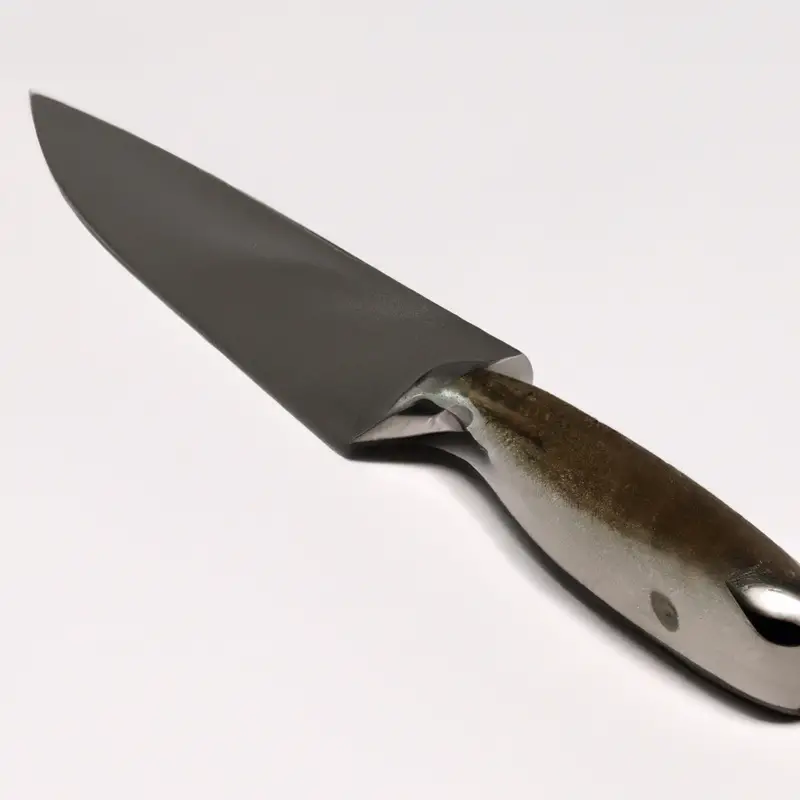
Final Verdict
While a paring knife may be a versatile tool in the kitchen, it is not the ideal choice for slicing bread or cake. Attempting to do so may not only yield subpar results but also pose potential risks to your safety.
When it comes to selecting kitchen knives, it is crucial to prioritize quality and suitability for the given task.
By investing in high-quality knives and implementing proper maintenance and handling techniques, you can enhance your cooking experience and ensure your safety in the kitchen. Remember, the right tool for the job can make all the difference.
Choose wisely.

